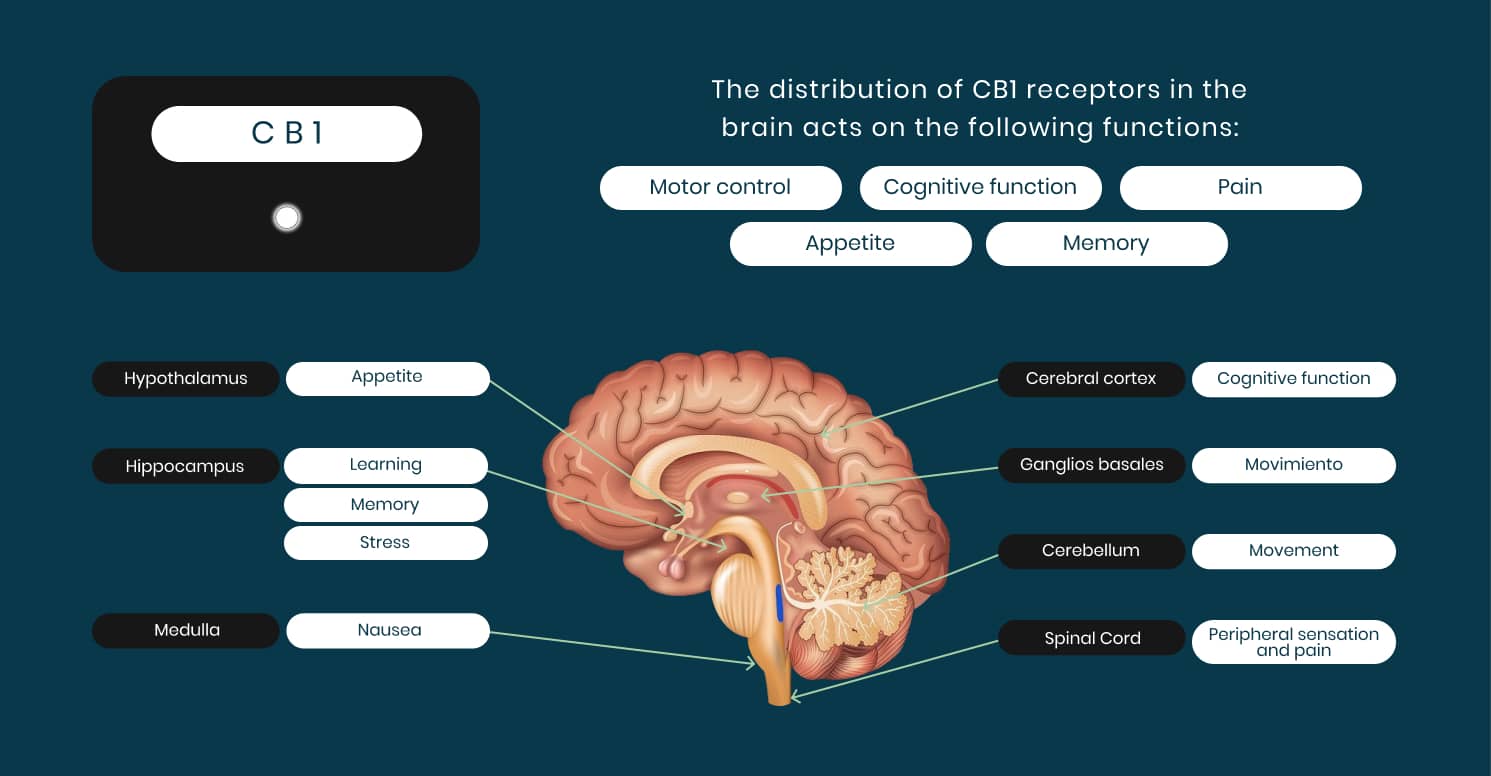CB1 receptors, or cannabinoid receptor type 1, are a type of receptor found primarily in the central nervous system, including the brain and spinal cord. These receptors are part of the endocannabinoid system, which plays a role in various physiological processes.
The discovery of the endocannabinoid system was largely influenced by research on the effects of cannabis on the human body. In the 1960s, scientists were investigating the psychoactive effects of THC, the main psychoactive compound in cannabis, and trying to understand how it interacted with the body.
In the process, they discovered that THC binds to specific receptors in the brain, which led to the identification of the first cannabinoid receptor, CB1. This discovery sparked further research, and in the early 1990s, scientists discovered the first endogenous cannabinoid (endocannabinoid), anandamide, which naturally occurs in the body.
Subsequent research revealed the presence of other endocannabinoids, such as 2-arachidonoylglycerol (2-AG), and additional cannabinoid receptors, including CB2 receptors primarily found in the immune system and peripheral tissues.
These findings led to the recognition of the endocannabinoid system as a complex signaling system in the body involved in regulating various physiological processes, including pain modulation, mood regulation, appetite, immune function, and more.
While the initial exploration of cannabis and its effects played a significant role in the discovery of the endocannabinoid system, subsequent research has focused on understanding the broader functions and potential therapeutic applications of this system beyond the use of cannabis alone.
When activated by cannabinoids, such as tetrahydrocannabinol (THC), the primary psychoactive compound in cannabis, CB1 receptors can have several effects on humans:
- Psychoactive effects: Activation of CB1 receptors in the brain by THC can produce psychoactive effects, including euphoria, relaxation, altered perception of time, and changes in mood. These effects are responsible for the “high” associated with cannabis use.
- Analgesia: CB1 receptors are involved in the modulation of pain perception. Activation of these receptors can produce analgesic effects, reducing the sensation of pain.
- Memory and cognition: CB1 receptors are found in areas of the brain involved in memory and cognition. Activation of these receptors can affect memory formation, attention, and learning. This is why cannabis use, particularly in high doses or over an extended period, can impair short-term memory and cognitive function.
- Appetite stimulation: CB1 receptors in the hypothalamus play a role in regulating appetite. Activation of these receptors can increase appetite, leading to the phenomenon commonly referred to as the “munchies” associated with cannabis use.
- Neuroprotection: CB1 receptors have been implicated in neuroprotective effects, particularly in conditions such as stroke and neurodegenerative diseases. Activation of these receptors may help reduce damage to brain tissue and promote cell survival.
- Modulation of mood and emotions: CB1 receptors are involved in the regulation of mood and emotions. Activation of these receptors can influence anxiety, depression, and stress responses. However, the effects can vary depending on the individual and the specific circumstances.
It’s important to note that while CB1 receptors have various effects on humans, the use of cannabis and cannabinoids can also have potential side effects and risks, especially when used in excess or by individuals with certain health conditions. Additionally, the effects of CB1 receptor activation can vary based on factors such as the specific cannabinoid, dosage, route of administration, and individual differences in genetics and tolerance.



